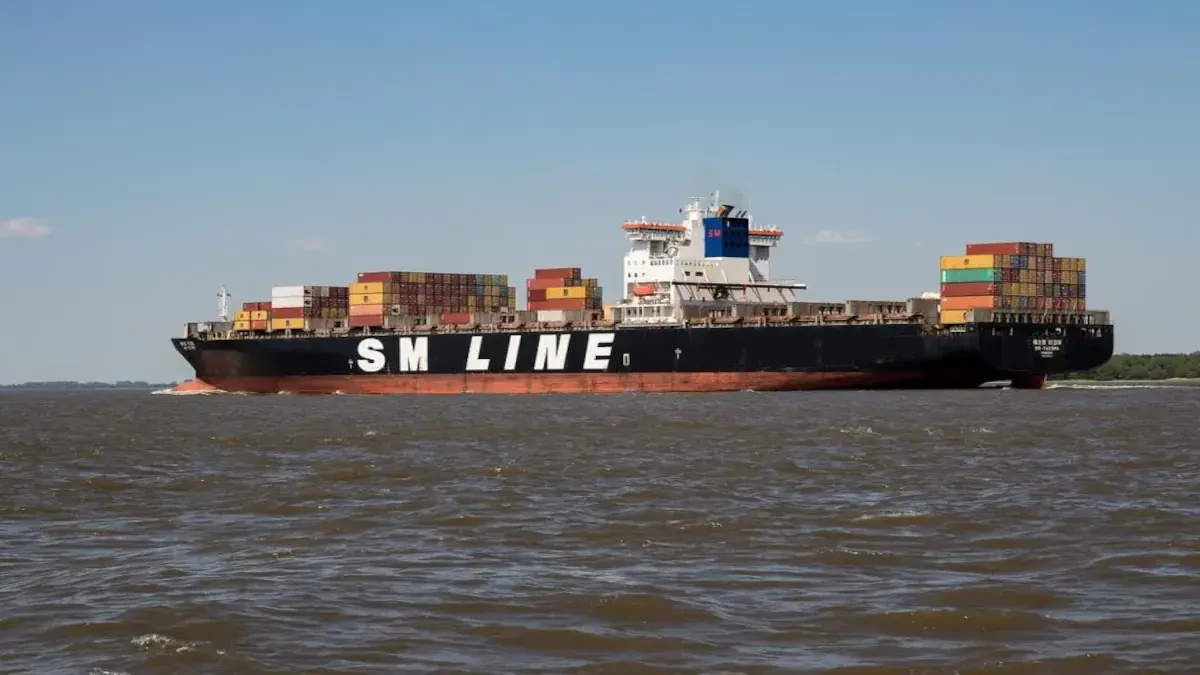Papua New Guinea (PG)
Published by Chris Townsend
Last updated Nov, 14 2025

How Much Does It Cost of Shipping A Container To Papua New Guinea?
Moving a container to another country involves a lot of work. Also, you could end up paying a lot more if you don't know the factors that could affect your shipping cost. In order to save time and money, it's advisable to get assistance from a moving company.
Three Movers is an international freight hauling company with services available around the world, including Papua New Guinea. We always guarantee that your delivery will reach its destination safe and sound.
How much would it cost to move to another country? Let's take a look!
We are a relocating containers weekly australia for pacific islands hauling company or moresby relocating containers australia and professional australian freight forwarder with self pack shipping containers.
How Much Does It Cost to Relocate a Container?
Your expenses could be around $2000 or $3000. There's no way to tell the exact cost because a number of factors could affect it.
To know more about it, here are the factors that mainly affects the cost of shifting:
- Properties of your cargo: Larger and heavier shipments cost more to shift.
- Distance - The shipping provider will charge you based on the distance traveled by your cargo.
- Mode of transport: Shifting your products by land and sea freight is less expensive than shipping them via air freight.
- Taxes and customs: Several countries are charging taxes depending on the value of imported cargo.
The time of when you will move your cargo also affects the overall cost.
For instance, suppose you chose to send your shipment during the summer or after vacation time. Since this is the busiest time of year for the shipping businesses, there's a good possibility you'll have to pay more for hauling.
However keep in mind that each country has a unique peak season highest visitors to Guinea-Bissau come between May and October so that is when the country ports can anticipate the highest foot traffic. Hauling delays are inevitable but they can be avoided at a higher cost.
Aside from those factors, the following might influence delivery costs as well:
- Insurance
- Packing
- Inspections
- General Rate Increase
- Storage
Instant Rates For Shipping Containers To Papua New Guinea
Average Container Shipping Rates

FCL shipping is best for transporting lots of boxes, pallets and anything which will require a full container shipping to Papua New Guinea of up to 45,000lbs.
Full Container Load (FCL) Moving Rates | |
|---|---|
| 20 ft Container | $586 |
| 40 ft Container | $676 |

LCL shipping is more affordable way to transport less than container load shipments to Papua New Guinea.
Less Than Container (LCL) Hauling Rates | |
|---|---|
| LCL | $46/CBM |
| Personal Effects | $523 |
| Household Goods | $712 |

International house moving to Papua New Guinea services - quick, easy and cheap.
International House Moving Costs | |
|---|---|
| Partial House (2000Lbs & Less) | $415 |
| 1 Bedroom (3850 Lbs) | $1513 |
| 2 Bedroom (4500 Lbs) | $2413 |
| 3+ Bedroom (8750 Lbs) | $3415 |

International auto transport services to Papua New Guinea via RoRo and container ships. Relocate cars, trucks, suvs, atv's, boats, RV's, heavy equipment and more.
Container Car Shipping | |
|---|---|
| Sedan (Container) | $1154 |
| SUV (Container) | $1255 |
| Sedan via RORO | $544 |
| SUV via RORO | $642 |
Which Size of Container Works Best for Me?
A 20-foot container is ideal for transporting the contents of your apartment. Everything in your living area, kitchen, bedroom, and bathroom can be stored in it.
A 40ft container, on the other hand, is perfect for the items of a micro/small business or a four-bedroom house.
It's not necessary to pay for the entire container. You can split its cost and storage space with another person. This type of shipping is called LCL or Less Than Container Load.
But in case you don't want to mix your stuff with other people or businesses, you can always pick FCL or Full Container Load. In this option, you will pay for the entire container, and the moving company will move it whether it's full or not.
Different Types of Freight Transportation
You have three options for getting your container to Papua New Guinea: air, land, and sea freight. Each one has its own set of benefits and drawbacks.
With that said, make sure to pick one that suits your plan and budget.
- Land freight transportation: This form of transit is commonly used for domestic and intercontinental shifts. It's inexpensive and quick, but this option is restricted to locations only accessible by road or track.
- Air freight charter services is a form of transit that offers fast delivery time. However, your shipping fee depends on the weight of your cargo. If you are shipping an entire container worth of items, expect to pay a hefty amount.
- Sea freight shipping solutions: This one is the least expensive but most time-consuming way of international relocating. The relocating process might take anything from a few days to a number of weeks, depending on the route and destination.
What's next?
Now that you know the factors that could affect the cost of moving a container, your next move is to contact us! We'll give you a free quote then we can start packing your things.
You can call us at (888) 202-0036 or send us an email at [email protected].
Find Cargo Containers For Freight Transport & Relocation
Frequently Asked Questions
Generally, prohibited items are items that are considered dangerous by the country. Such items are:
- Advertising matter relating to any goods the importation of which is prohibited absolutely
- Animals of all kinds and semen of animals
- Controlled drugs, such as Cocaine, Cannabis, and so on
- Counterfeit banknotes and coins and any articles that so nearly resemble banknotes and coins as to be likely to deceive
- Firearms, parts of firearms, and ammunition
- Goods, being books, magazines, video recordings, films, computer discs, sound recordings, and so on, that is objectionable (pornography, violence, crime, etc.).
The country keeps changing its tariff rates without any form of notice so there is never a published list of duties and taxes. It is advisable that you contact the customs of the country if you intend to ship items so you get the updated tariff plan. Duties are based on ad Valorem so the amount payable will depend on what is being imported.
Shipping taxes are fixed fees placed on all shipping transactions. This includes exportation and importation. They are a way of increasing revenue for a country. An example of a shipping tax is the value-added tax (VAT) which cuts across both imported and exported items. Shipping duties, on the other hand, are fees that are calculated on an item-to-item basis. They are imposed to protect a country’s economy and prevent the uncontrolled importation of certain items.
Yes, shipping containers are watertight. If they weren’t items would be delivered wet and most likely water damaged. As containers age, they lose their water tightness and become porous. So, check with your supplier to ensure that the container being delivered is still watertight. Shipping containers are also usually well ventilated unless they have been manufactured or repurposed otherwise. It makes it possible to transport animals and plants over long distances without the risk of suffocation.
A freight forwarder is a company or a firm that handles the documentation and logistics of cargo on behalf of a shipper while a broker is an agent that gets shipper clients for a carrier who doesn’t want to search for and transact with clients. A Non-Vessel Owning Common Carrier is a company or a firm that provides carrier services without owning or operating a carrier. They use the services of carriers as shippers but issue bills of lading and deliver the items to the destination like carriers. Only an NVOCC can issue its own bill of lading. Freight forwarders are useful to handle the intricacies of shipping while brokers help the carrier get business.
The maximum container weight is a very important detail to take into account. An excess of cargo weight could lead to extra costs because the cargo will need to be stripped and re-stuffed into two containers, inland costs, etc. at the expense of the shipper’s account. For a 20ft container, the maximum weight is 55,000 lbs. while for a 40ft container, the maximum weight is 61,000 lbs. The containers can theoretically carry more but to prevent penalties for overloading, these values shouldn’t be exceeded.
As a shipper, you can do a lot of things to ensure your cargo reaches its destination in the best possible condition. For example, you can choose a reliable carrier, take extra care when packing your shipment and provide thorough handling instructions. No matter what, though, some elements will always be out of your control. And that’s when cargo insurance coverage comes in handy. There are things you need to know when considering insurance for your cargo. You need to figure out the exact value of your items so you don’t undervalue your items to get cheaper premiums but then end up getting less back in the event of an accident. The type of coverage that suits your cargo and the exclusions in your insurance agreement.
Yes, you can track your container while it is in transit. A GPS-based tracker can be used. It is important you track your containers because keeping track of the movement of all ocean shipments on one platform, container tracking systems bring much-needed visibility into the flow of cargo. Container tracking systems automate the tracking by constantly monitoring current locations and adjusting expected times of arrival as events occur in transit. This makes the shipping process less stressful.
Papua New Guinea has strict regulations on certain goods. Prohibited items include firearms, explosives, narcotics, perishable foods, and items made from protected wildlife. Additionally, some goods may require special permits or documentation, such as electronics, chemicals, or plants. It’s important to check local customs regulations before shipping to avoid delays or confiscation.


